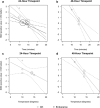Impact of Cold-Water Immersion Compared with Passive Recovery Following a Single Bout of Strenuous Exercise on Athletic Performance in Physically Active Participants: A Systematic Review with Meta-analysis and Meta-regression
- PMID: 35157264
- PMCID: PMC9213381
- DOI: 10.1007/s40279-022-01644-9
Impact of Cold-Water Immersion Compared with Passive Recovery Following a Single Bout of Strenuous Exercise on Athletic Performance in Physically Active Participants: A Systematic Review with Meta-analysis and Meta-regression
Abstract
Background: Studies investigating the effects of cold-water immersion (CWI) on the recovery of athletic performance, perceptual measures and creatine kinase (CK) have reported mixed results in physically active populations.
Objectives: The purpose of this systematic review was to investigate the effects of CWI on recovery of athletic performance, perceptual measures and CK following an acute bout of exercise in physically active populations.
Study design: Systematic review with meta-analysis and meta-regression.
Methods: A systematic search was conducted in September 2021 using Medline, SPORTDiscus, Scopus, Web of Science, Cochrane Library, EmCare and Embase databases. Studies were included if they were peer reviewed and published in English, included participants who were involved in sport or deemed physically active, compared CWI with passive recovery methods following an acute bout of strenuous exercise and included athletic performance, athlete perception and CK outcome measures. Studies were divided into two strenuous exercise subgroups: eccentric exercise and high-intensity exercise. Random effects meta-analyses were used to determine standardised mean differences (SMD) with 95% confidence intervals. Meta-regression analyses were completed with water temperature and exposure durations as continuous moderator variables.
Results: Fifty-two studies were included in the meta-analyses. CWI improved the recovery of muscular power 24 h after eccentric exercise (SMD 0.34 [95% CI 0.06-0.62]) and after high-intensity exercise (SMD 0.22 [95% CI 0.004-0.43]), and reduced serum CK (SMD - 0.85 [95% CI - 1.61 to - 0.08]) 24 h after high-intensity exercise. CWI also improved muscle soreness (SMD - 0.89 [95% CI - 1.48 to - 0.29]) and perceived feelings of recovery (SMD 0.66 [95% CI 0.29-1.03]) 24 h after high-intensity exercise. There was no significant influence on the recovery of strength performance following either eccentric or high-intensity exercise. Meta-regression indicated that shorter time and lower temperatures were related to the largest beneficial effects on serum CK (duration and temperature dose effects) and endurance performance (duration dose effects only) after high-intensity exercise.
Conclusion: CWI was an effective recovery tool after high-intensity exercise, with positive outcomes occurring for muscular power, muscle soreness, CK, and perceived recovery 24 h after exercise. However, after eccentric exercise, CWI was only effective for positively influencing muscular power 24 h after exercise. Dose-response relationships emerged for positively influencing endurance performance and reducing serum CK, indicating that shorter durations and lower temperatures may improve the efficacy of CWI if used after high-intensity exercise.
Funding: Emma Moore is supported by a Research Training Program (Domestic) Scholarship from the Australian Commonwealth Department of Education and Training.
Protocol registration: Open Science Framework: 10.17605/OSF.IO/SRB9D.
© 2022. The Author(s).
Conflict of interest statement
Emma Moore, Joel T. Fuller, Sienna Saunders, Shona L. Halson, James R. Broatch and Clint R. Bellenger declare that they have no conflict of interest. Jonathan D. Buckley is a recipient of a grant from the Norwood Football Club to evaluate effects of cold-water immersion on recovery of athletic performance. Norwood Football Club had no involvement with the current manuscript.
Figures







References
-
- Meeusen R, Duclos M, Foster C, Fry A, Gleeson M, Nieman D, et al. Prevention, diagnosis, and treatment of the overtraining syndrome: joint consensus statement of the European College of Sport Science and the American College of Sports Medicine. Med Sci Sports Exerc. 2013;45(1):186–205. doi: 10.1249/MSS.0b013e318279a10a. - DOI - PubMed
Publication types
MeSH terms
Substances
LinkOut - more resources
Full Text Sources
Medical
Research Materials

